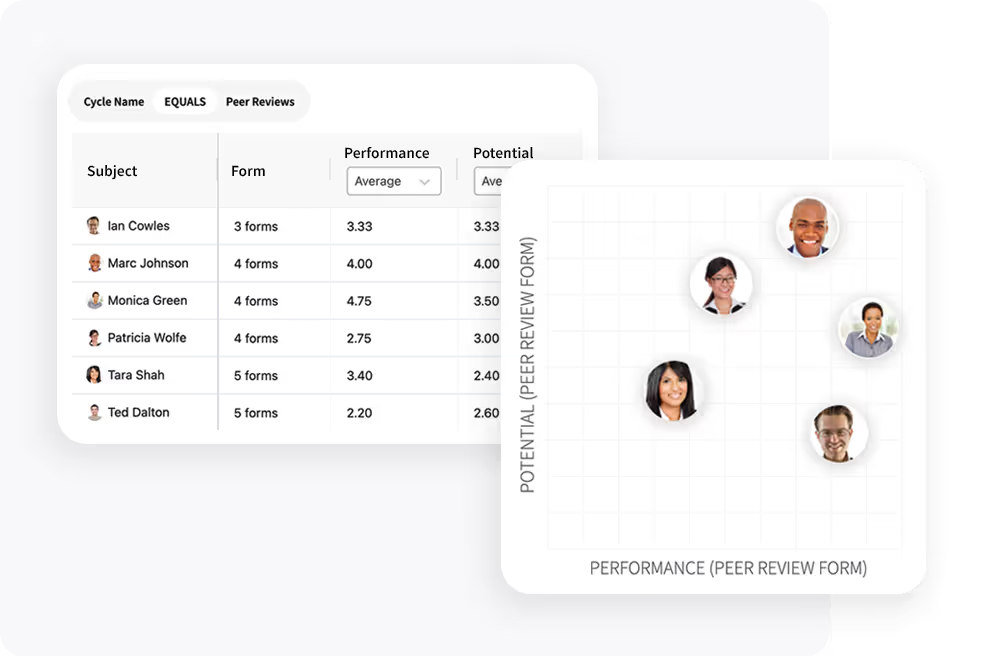Does Rank and Yank Work? 8 Pros and Cons
Who are your top performers?
With the top 5% of your workers producing an estimated 26% of your output, it is important to know exactly who those people are.
Once identified, you can recognize their hard work, provide them with perks, and increase their pay. Recognizing top performers makes it less likely that they leave your company. You’ll reduce turnover and the associated costs. Plus, recognition encourages employees to perform at their peak. It supports a culture of achievement.
So which employee performance system is best to identify your top performers?
For some companies, the answer is a form of a rank-and-yank employee performance system.
But what is a rank and yank system, which companies use it, and is it something you should adopt in your business?
Here is everything you need to know about a rank-and-yank employee performance framework.
What is a Rank and Yank System?
The traditional yank and rank system goes back to the 1980s when Jack Welch, General Electric’s CEO developed it.
It ranks employees against each other, with the highest performers at the top and the lowest performers at the bottom. The company fires the employees who fall to the bottom.
The presumption is that your most dedicated, highest-performing team members continue to rise to the top. In turn, you continue to cut the dead weight from your team. The intention is to create a competitive atmosphere in which teams have the motivation to perform at the highest level. Rank and yank also requires that you reward those who rank at the top.
The Pros and Cons of Rank and Yank
No employee performance management system is perfect. That’s the case when it comes to the rank and yank approach.
It’s important to consider the rank and yank pros and cons before when designing a performance management framework.
Pros of Rank and Yank
One of the most appealing aspects of the rank and yank system is that it allows employers to create a standard by which to measure all employees. It streamlines the process for HR and management, but it can also clarify expectations for employees. Everyone knows how they are going to be ranked against everyone else, and everyone else is getting ranked according to the same standards.
Ranking your employees makes it easier to create incentives. You can give a raise or a bonus to a certain number or a percentage of your highest performers. Team members find the motivation to perform at the highest level when there’s a great incentive for doing so.
Reporting is easier with rank and yank, as everyone is measured by the same standard. It makes analyzing data easier too. You can compare employees quickly, and employees can see how they compare to their coworkers.
Cons of Rank and Yank
There are plenty of disadvantages to a rank-and-yank system.
The whole premise of the practice of ranking employees and firing the lowest performers is flawed. It assumes that a certain number of employees aren't making the cut, but that may not be the case.
With a rank-and-yank system, you may be firing perfectly good workers because someone has to end up at the bottom. Their work may be completely acceptable, and even above average, but they are fired because others rank above them. It tells workers that no matter how hard they work, they could still be let go because everyone else did better than them.
This system can be demoralizing to employees. Anyone worried about the possibility of underperforming is always concerned they might lose their job.
Rank and yank promotes a system of me instead of a system of we. Everyone is too busy looking out for themselves to embody a team-oriented atmosphere. Employees keep important information close to the chest. They may also celebrate other employee losses. Coworker failures can provide employees with a feeling of job security.
Rank and yank also assumes an employee’s underperformance is their fault. In reality, it could be a lack of training that’s causing poor performance. Their performance could be blamed on a bad manager who struggles to outline expectations with their team. A lack of resources can cause underperformance. It’s unfair to let an employee go when it’s the company and its operations that need to make adjustments.
Speaking of poor management, some managers may use this system to their advantage. Managers are in charge of rankings and can use them to punish insubordination. They can keep a star performer on their team by giving a lower ranking than they deserve. Some managers can even try to make themselves look good by inflating their team's ratings.
It can also kill innovation. Employees avoid challenging projects that could potentially fail because they don’t want to get a low rank for taking a risk that didn’t pay out.
Is Rank and Yank an Ethical Employee Management Practice?
Rank and yank may be a simple way to do reviews, but should you fire someone because they landed at the bottom of the list?
Firing an employee is something no company should take lightly. There are plenty of laws that prohibit firings in certain cases. These laws even exist in states with at-will employment.
If you’re considering a rank and yank system, or it’s already in place, you have an obligation to your team. Employees must understand the situation, especially during the hiring process.
Candidates for open positions should know about the system before they are offered the job. Existing workers should know the system too. Everyone should be aware of how they are going to be ranked. They should know when they are going to be ranked. They should know what to expect from the termination process so they are prepared, should it ever come to that.
It’s also a good idea to have a system to resolve disputes. Employees should be able to appeal their rank if they think it was given to them unfairly.
Are There Any Companies That Use a Rank and Yank System?
The system of rank and yank is falling out of favor with 21st Century companies. Businesses want to foster collaboration and build teams with high morale. So who has used a rank and yank system in the past? Are there any rank and yank companies that still use it today?
Spokespeople deny the use of rank and yank at Amazon. Still, the company uses manager ratings and tiers based on performance to terminate 6% of its workforce each year.
That may not be the case for long. A new bill would impose penalties on companies that fail to disclose employee files. The hope is that more transparency will positively impact the process.
As of a few years ago, Yahoo was still using a system of rank and yank, ultimately to their detriment, as they faced a lawsuit in 2016 over their system.
It isn’t just Amazon and Yahoo that have found themselves in hot water over a rank-and-yank performance management system. Rank and yank at Enron is perhaps the most famous example of the negative influence of this practice. They went from a model organization in 2000 to bankruptcy in 2001. This was due to unethical practices that were a direct result of ranking and subsequently firing employees. People are willing to do unethical things when the number one goal is to make as much money as possible.
Today, you won’t find any company that admits to ranking and yanking employees. The term has become synonymous with poor management practices.
Take the Good and Leave the Bad
It seems pretty clear that rank and yank is a management strategy that should be left in the past, but no performance management approach is all bad. It’s much better to take the good and leave the rest.
Rank and yank isn’t a term that’s used today, but this style of review goes by many other names that companies are using.
For example, Jack Welch himself never liked the term "rank and yank". He preferred the term "differentiation" and eventually created what he called the “vitality curve”.
He said, "Differentiation isn’t about corporate plots, secrecy, or purges. It’s about building great teams and great companies through consistency, transparency, and candor. Differentiation is nuanced, humane, and occasionally complex. It has been used successfully by companies for decades."
Many of the companies that are still using it use a system of stack ranking appraisals. It’s the rank and yank system under another name, but because of its title, firing a certain number of employees does not have to be part of the process.
Most modern systems address poor performance by giving employees objectives to hit on before the next review. Employee development and training may also be viable options. Smart companies consider these approaches before anyone thinks about letting someone go. That means you can still rank employees against each other if it supports your company’s objectives. You just don’t have the potentially unethical practice of firing those that fall at the bottom of the bell curve.
Alternatives to Rank and Yank
A full understanding of the meaning of rank and yank may have you scrambling for other options. After all, even dumping the “yank” aspect of rank and yank can still pit employees against each other and kill innovation.
Fortunately, there are plenty of other performance appraisals you can consider. Just a few include:
- 360 Feedback
- Competency assessment
- Project-based reviews
- Rating appraisals
- Checklist appraisals
360 Feedback
Relying on managers to do all of the reviewing can result in inaccurate and unfair ranks. You can solve that problem with 360 feedback.
This type of review involves collecting professional feedback from coworkers. It provides a wide-view look at how an employee operates within the total organization—not just how they are seen by their manager.

Competency assessment
If you want a high-performing team, having employees who are competent in their roles is important. Instead of ranking them against each other, consider ranking them against critical job skills.
Competency assessments highlight proficiency. They can also uncover gaps in knowledge and skills that can be addressed. It feels a lot less like a competition when employee skills are measured against skills than when they are measured against others.
Project-based reviews
If teams in your organization work on projects, you can measure their performance based on the outcome of the latest project.
Project-based reviews promote a more team-oriented atmosphere. Everyone on the team is measured together according to what they have accomplished, or how the team fell short. You can create goals ahead of the next project. This encourages improvement without pitting anyone against each other.
Rating appraisals
Rating appraisals are a lot like stacked rankings, but with ratings for each job responsibility. They use a numerical or descriptive scale to determine an employee's performance in certain areas of their job.
This type of review allows for more balanced ratings. Employees can see where they’re doing great and where they could use improvement. Rating appraisals help companies avoid putting employees in boxes labeled “good” or “bad.” In reality, employees do some things well and have areas that could use improvement.

Checklist appraisals
Checklist appraisals also inform employees of their performance across different areas. With simple "yes" or "no" answers to statements about employees, it's easy for management to complete reviews.
Because they are so easy, employees can review managers using this approach as well. Employees can also answer "yes" or "no" questions in a few minutes so managers also know where they stand. That way managers aren’t completely responsible for ratings. It also opens up the possibility for managers to build better teams by working on their management skills.

